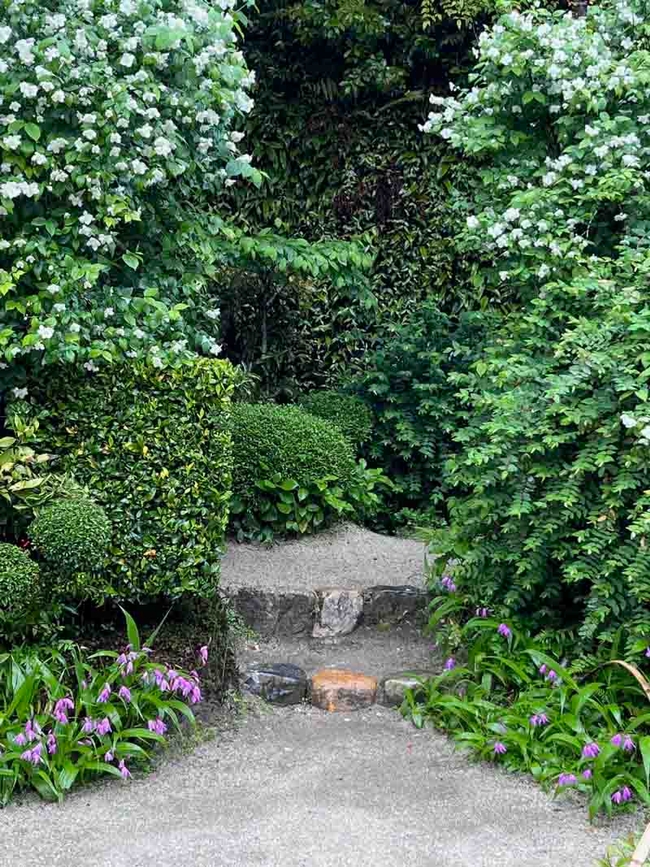There is a lot to learn from the long, venerable tradition of gardening in Japan, a point made in last week's Real Dirt, which focused on the history and meaning of Japanese gardens. Indeed, in Kyoto alone there are more than 50 temple and palace gardens, each one full of potential inspiration for the home gardener. Here are some takeaways:
- Frame a view. Dry gardens of sand, rocks, and minimal plant matter, are meant to be viewed, and contemplated, from inside a temple building; its broad wall openings frame the view. Why not apply this idea by using the architecture of your own home (windows, French doors) to frame a composition in the garden outside?
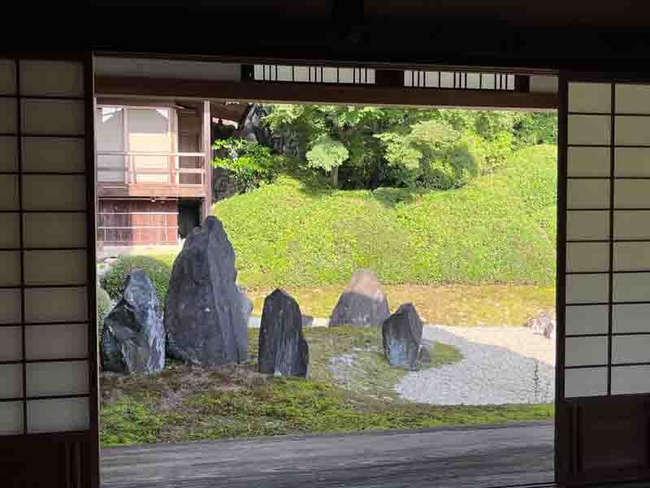 Garden scene framed by building doorway at Komyo-in temple, Kyoto. J.C. Lawrence
Garden scene framed by building doorway at Komyo-in temple, Kyoto. J.C. Lawrence
- “Borrow” scenery. Often the view of a surrounding hillside or natural feature will be incorporated into a Japanese garden, essentially expanding the “garden” beyond its own boundaries. If your neighbor has a beautiful tree, for example, you could prune some of your own shrubs to include a view of it in your garden (especially if their tree has beautiful spring blossoms or fall foliage).
- An all-green garden can be beautiful and interesting, as well as restful. Consider planting evergreens of various shades of green, with textural interest from different plant heights and a variety of leaf shapes and configurations. When a nearby flowering tree blossoms (like a cherry tree in spring) it will stand out all the more against its green backdrop; the same can be true of deciduous trees with beautiful fall leaf color.
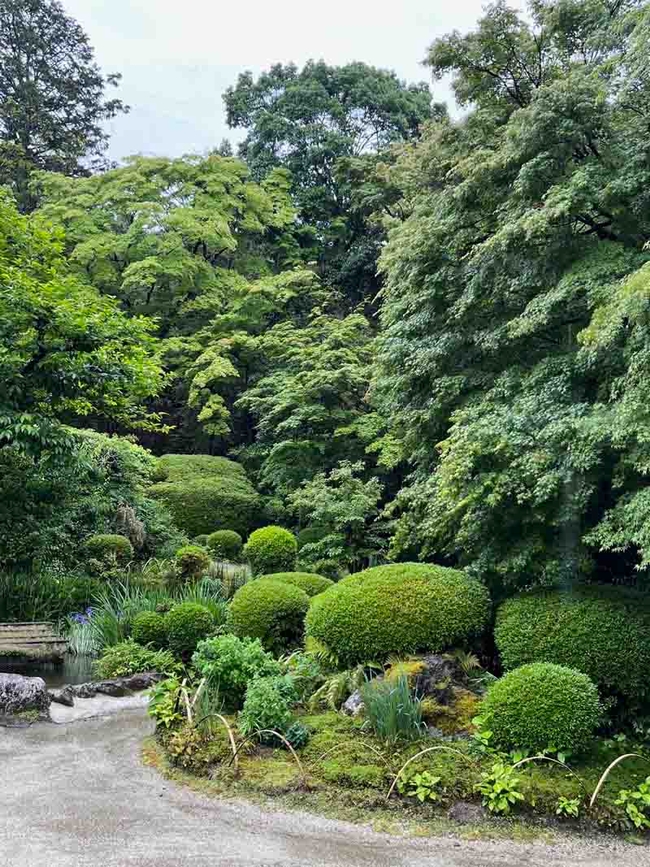 Many shades of green create a peaceful scene at Shisen-do garden in Kyoto. J.C. Lawrence
Many shades of green create a peaceful scene at Shisen-do garden in Kyoto. J.C. Lawrence
- A garden doesn't have to have plants in it! A dry garden can contain multitudes – the idea that the vast (even the whole world) can be represented in the small, controlled space of a garden is not unique to Zen Buddhism, but is often used as a guiding principle in Japanese dry gardens, where rocks can represent mountains, and raked sand the sea (as the saying goes, “the earth in a grain of sand; the sea in a drop of water”).
- Make room for rocks (and other natural materials). And consider how the sun will fall on them at different times of day and in different seasons of the year.
- Incorporate the principle of “shin-gyo-so”: the use of formal, less formal, and informal materials together. This is often seen in paths and walls. For example, carefully cut and shaped blocks of granite (formal) might border a path composed of river rock (natural, informal), or formal stepping stones might be arranged in an informal pattern, so the effect is one of semi-formality.
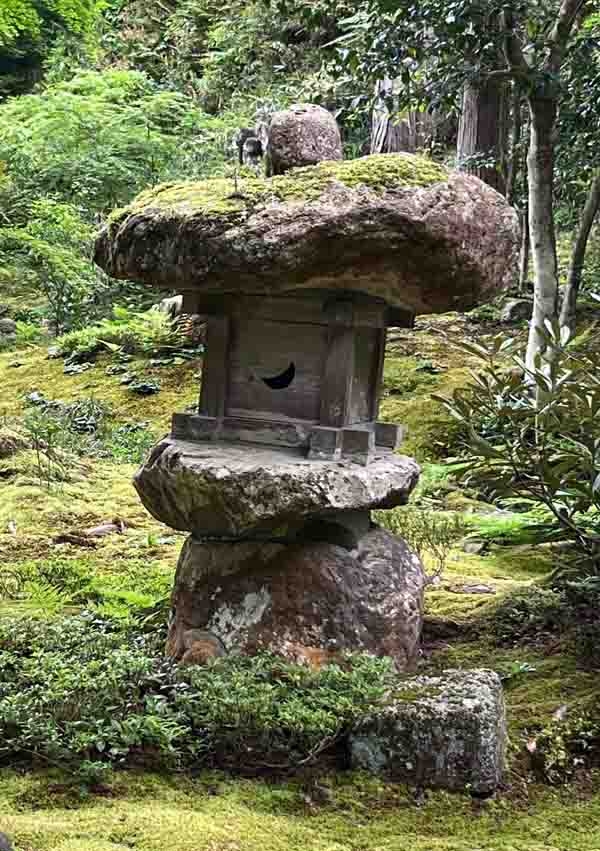 Stone lantern amid the moss at Sanzen-in garden in Ohara, northern Kyoto. J.C. Lawrence
Stone lantern amid the moss at Sanzen-in garden in Ohara, northern Kyoto. J.C. Lawrence
- Make a statement with one large piece of sculpture. The stone lanterns seen in many Japanese gardens are used primarily as sculptural elements and rarely as functioning lights.
- Use color sparingly. Large swaths of the same color are more soothing to the eye than a jumble of bright colors.
- Take care of your evergreens. Careful pruning and shaping can create a truly stunning work of living sculpture.
- Consider shadow and light. If sunlight coming through the leaves of your tree casts shadows on a walkway, deck, or window covering, rejoice in that beauty.
- Re-use old materials in new ways. The Japanese word for this is “mitate” and this principle is seen, for example, in the use of old roofing tiles to make a pathway.
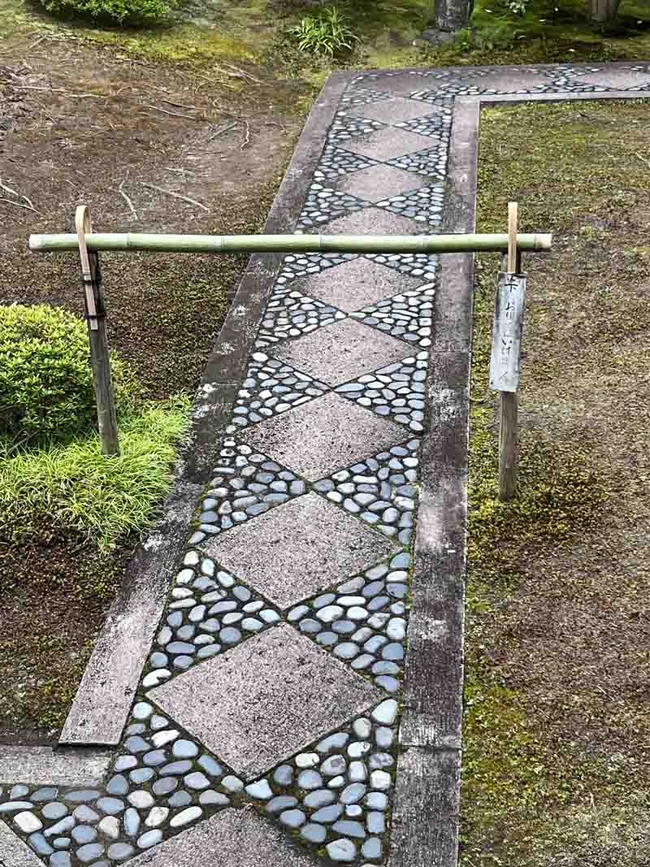 This pathway at Ryogen-in garden in Kyoto demonstrates the principle of combining more formal and less formal elements. J.C. Lawrence
This pathway at Ryogen-in garden in Kyoto demonstrates the principle of combining more formal and less formal elements. J.C. Lawrence
- Hide and reveal: place a particular plant or garden feature around a curve in a path, or on the other side of a large shrub, so that turning a corner presents the garden visitor with something previously unseen and unexpected to appreciate.
For much more on this topic, see Marc Peter Keane, Japanese Garden Design (2016). For an American woman's personal account of working in Japan's male-dominated gardening culture (though that is changing) see Leslie Buck, Cutting Back: My Apprenticeship in the Gardens of Kyoto (2017).
Why not visit a Japanese garden closer to home than Kyoto? There are several in California, including the Shinzen Friendship Garden in Fresno; the Storrier Stearns Japanese Garden in Pasadena; SuihoEn, a Japanese Garden in Van Nuys and, of course, the Japanese Tea Garden in San Francisco's Golden Gate Park. If you are traveling to Oregon or Washington, there are fine examples in Portland (Portland Japanese Garden) and Seattle (Seattle Japanese Garden).
Want to learn about garden design in general? Attend our two-part workshop on Landscape Design (Nov. 7 & 14), part of the Master Gardeners' Fall 2024 Workshop Series. For more information, and to register, visit our website.
UC Master Gardeners of Butte County are part of the University of California Cooperative Extension (UCCE) system. To learn more about us and our upcoming events, and for help with gardening in our area visit our website. If you have a gardening question or problem, email the Hotline at mgbutte@ucanr.edu or leave a phone message on our Hotline at 530-552-5812. To speak to a Master Gardener about a gardening issue, or to drop by the MG office during Hotline hours, see the most current information on our Ask Us section of our website.
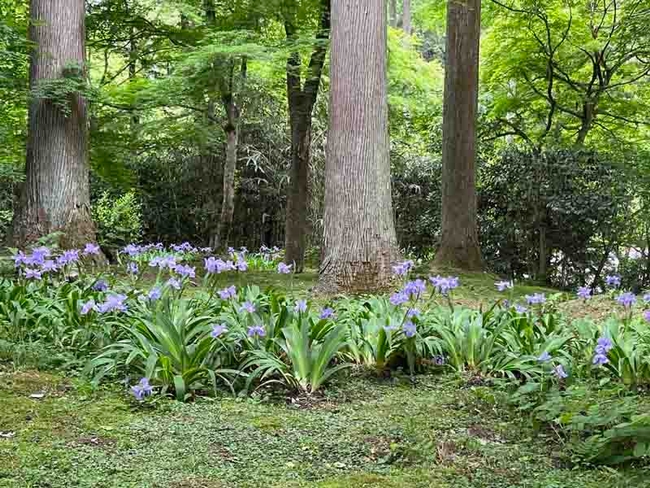
Looking for some garden inspiration? Let's do some “armchair travelling” across the Pacific to one of the world's loveliest places for garden viewing: Kyoto, Japan.

The balance between nature and man-made beauty as a guiding principle of all Japanese gardens goes back to prehistoric times. And the belief that certain stones, waterfalls, ponds, and giant trees were sacred had long been a part of Japanese culture and its native Shinto religion. But in the late 700s a confluence of events led to the first formal aristocratic gardens in Japan.
The idea of the garden as an art form was introduced by craftsmen from China and Korea at the same time that Kyoto (Heian-Kyo) became the capital city of the Japanese islands. By this time several schools of Buddhism, also arriving from Korea, had been established, bringing with them ideas about the natural world that would become incorporated in the formal gardens of Japanese nobles. For example, the placement of one large rock surrounded by several smaller ones to symbolize the mountains that are a primary geographical feature of Japan. Or the creation of a pond with a small island situated in its midst to symbolize the “pure land” where enlightened spirits go when they die, ending the otherwise constant cycle of death and rebirth.

The Gardens of Zen Buddhism: The dry gardens associated with Japan arose with the influence of Zen Buddhism. The Mongol invasion of China in the early 1200s forced many Chinese priests to flee to Japan, bringing with them Zen Buddhism, with its emphasis on meditation as the path to self-enlightenment. In Japan, the powerful warrior class (Shogunate) had taken control away from the nobles, and the “middle way” (no fear, no desire) and self-reliant aspects of Zen Buddhism appealed to these new rulers. The gardens of warrior residences and Zen temples in cities became enclosed, inward-looking, austere landscapes, often referencing images from Chinese literature that expressed themes of Zen Buddhism. There was also a rising merchant class, with smaller properties, that favored less expansive gardens for reflection and contemplation rather than exploration.

In the late 1500s and 1600s, the drinking of tea became elevated into an artform in Japan – another aristocratic practice that appealed to the warrior class as well as the merchant class. The ceremony of drinking tea in a rustic hut was an act of simplicity and humility, approached via a series of thresholds through which one progressively cast-off worldly cares and pressures.
Tea Gardens were, in effect, corridors leading to simple, grass-roofed tea houses. Stepping stones, small gates representing thresholds, and stone lanterns were integral to their design; lining the path would be evergreen trees and shrubs, and perhaps a few deciduous trees for fall color. Flowering trees or shrubs, annuals, and perennials were rarely incorporated, if at all, because their call for attention would compete with the goal of austerity. The aesthetic experience of tea culture is a good example of the term “wabi-sabi” in action: the appreciation of the patina that simple, common materials achieve with use and age.

Of course, it is unlikely that any of us have the acreage or desire to create an elaborate stroll garden, or the need for a separate tea house. But there are many lessons to be learned from these gardens. For a start, the garden elements we choose can have deeper meanings and associations. Hardscaping and garden plants can be employed to create a mood, or to encourage one to slow down and look closely. The view of the garden from one's windows can be just as important as experiencing it outside. A beautiful garden doesn't necessarily have to have a lot of blooming flowers – there are many, many shades of green!

The source for this article is Marc Peter Keane, Japanese Garden Design (Tuttle Publishing, 2016). Highly recommended!
Want to learn about garden design in general? Attend our free workshop on Landscape Design, part of the Master Gardeners' Fall 2024 Workshop Series. For more information, and to register, visit our website.
UC Master Gardeners of Butte County are part of the University of California Cooperative Extension (UCCE) system. To learn more about us and our upcoming events, and for help with gardening in our area visit our website. If you have a gardening question or problem, email the Hotline at mgbutte@ucanr.edu or leave a phone message on our Hotline at 530-552-5812. To speak to a Master Gardener about a gardening issue, or to drop by the MG office during Hotline hours, see the most current information on our Ask Us section of our website.

